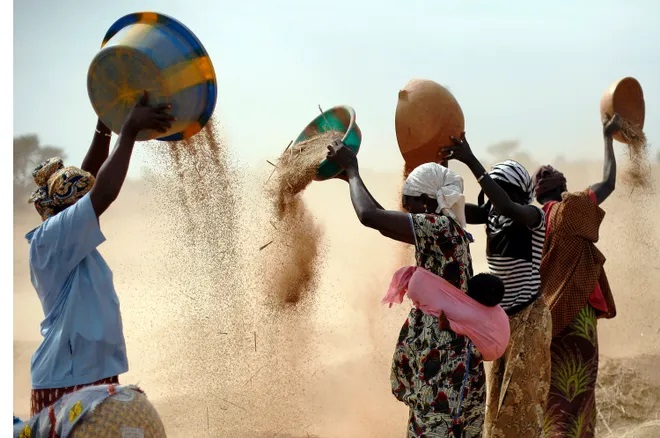Kristalina Georgieva, the International Monetary Fund managing director, told the World Economic Forum in May that “anxiety about access to food at a reasonable price globally is hitting the roof” as food prices continue to “go up up up.” Wheat prices have jumped to record levels in large part because Ukraine and Russia represent about 25% of the world’s supply. Their grains are critical for global food price stability.
In an article in The Economist entitled “The Coming Food Catastrophe,” the author describes how Vladimir Putin will destroy the lives of people far from the battlefield. The war is battering a global food system weakened by COVID-19, climate change and the energy shock. China, the largest wheat producer, has said that, after rains delayed planting last year, this year’s crop may be its worst ever. Now, in addition to the extreme temperatures in India, the world’s second-largest producer, a lack of rain threatens to sap their grain output.
Antonio Guterres, United Nations Secretary-General, threatened that “the specter of a global food shortage has increased the number of people who cannot be sure of getting enough to eat by 440 million to nearly 1.6 billion. Nearly 250 million are on the brink of famine. If, as is likely, the war drags on and supplies from Russia and Ukraine are limited, hundreds of millions more people could fall into poverty. Political unrest will spread, children will be stunted, and people will starve.”
The United Nations estimates that over the past 12 months, global food prices have risen by approximately one-third, fertilizer by more than a half and oil prices by almost two-thirds. The situation in Ethiopia, Somalia and Kenya is extremely grave. In those countries, one person is likely dying every 48 seconds from acute hunger-related causes stemming from armed conflict, COVID-19, climate change and inflationary pressures.
Why Ukraine cannot export its grain
Because Russia has blocked Ukrainian seaports, the country’s ability to export its annual production of 30 million tons of corn, wheat and sunflower oil has been severely curtailed by more than 50 percent. Mykola Gorbachov, president of the Ukrainian Grain Association, said, “Before, we could export up to 7 million tons per month from Ukrainian sea ports, and now in the best case … I hope we will reach one and a half million tons.” In large part, Ukraine’s exports went to countries in Asia and Africa.
The logistics of replacing seaports to export Ukraine’s grain are daunting. Specifically, transferring Ukrainian grain through Poland would mean that cargoes would have to be lifted by cranes to different trains because Ukraine’s Soviet-era railways use a wider gauge.
Volodymyr Zelensky, the president of Ukraine said that 22 million metric tons of grain stored in warehouses across Ukraine cannot be exported and thus will rot.
In response to criticism, a Kremlin official said that his country “is open to easing the blockade if sanctions on Moscow are lifted.” The Wall Street Journal reported that the Russian proposal has been rebuffed by Ukraine and its Western allies.
Ukraine war resolution: Two proposals
The war in Ukraine has split its resolution into two broad camps. One is the “peace party,” which wants a halt to the fighting and begin negotiations. The “peace party” worries about the human cost to Ukraine and the rest of the world. The other is the “justice party,” which thinks Russia must pay dearly for its aggression. They feel that sanctions on Russia are just starting to bite.
The current status of the war is uncertain. Is Ukraine winning because it saved Kyiv? Is it losing because Russia has taken Mariupol?
The likelihood of a compromise is currently unrealistic because both Ukraine and Russia must believe that the war is in a stalemate. Even worse, the Russian invasion could lead to a nuclear war.
Originally published in the Sarasota Herald-Tribune




